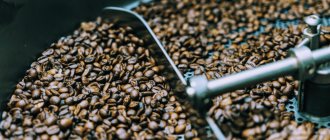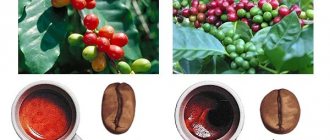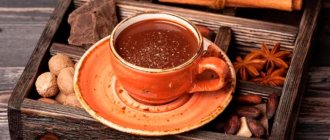History of the Barista coffee brand
The founder of the brand is Oktay Iskenderov
In 2000, the owner Oktay Iskenderov came up with the idea of creating a coffee brand that would have a special taste and be inexpensive. So in the village of Vishnevka near Minsk a factory appeared, the purpose of which was to popularize bean coffee.
Already during the installation of the equipment, a rather comical situation arose - severe frosts frightened the Italians who supplied and installed the equipment. Since the building had not yet been completed, we had to work literally in the open air - the roof was just beginning to be covered. Employees who have been working since its founding remember how heat-loving Europeans were given tea every half hour. But the equipment was still installed.
Italian coffee equipment is installed in the production
At first, it was not easy for a small production to withstand competition. Then exports to the Russian and Ukrainian markets improved and the brand began to develop and expand its range. Recognition from professionals followed: the international coffee evaluation forum Coffee Review gave the products a worthy assessment.
In addition to excellent taste and quality, Barista products are also distinguished by their packaging: it is not only designed in a recognizable style, but also thought out to the smallest detail.
The three-layer design with special fasteners ensures tightness, preserving the taste and aroma of coffee even after opening.
History of coffee production Barista
The owner of the AVD Production enterprise, Oktay Iskenderov, decided in 2000 to open a plant near Minsk, in Vishnevka, to produce a new coffee brand, and invited Italian specialists to install the equipment.
Coffee lovers in Ukraine and Russia liked the special taste and price. Professionals also appreciated the product presented at the international forum.
I also liked the three-layer, sealed packaging, equipped with special fasteners. Even opened bags retain all the coffee aromas and taste properties of the product.
In 2011, a subsidiary was founded with its head office in St. Petersburg. It belongs to the coffee industry of the parent concern Soyuz Corporation, under the Soyuz Coffee Roasting brand. With the production of “specialty coffee” already in Kaliningrad.
Raw grains and production process
The company purchases beans from almost all countries where green coffee grows: India, Latin America, Africa, etc. Thanks to partnership agreements, suppliers provide only the highest quality raw materials, carefully selected by hand and processed depending on the taste of the coffee in the future. For example, some beans are supplied in peels, which, when dried, gives them a fruity sourness and spicy aroma. For a classic taste, the beans are cleared of pulp and washed before being sent to production.
Raw materials are purchased from Brazil, India, Africa
The blends are developed by professionals in their field. To reveal the unique taste of coffee, they experiment with roasting methods and create unique combinations of varieties.
Before going for roasting, the beans undergo thorough cleaning: possible foreign objects are removed from them in several stages, one of the most important is magnetic, which allows you to detect metal objects. According to the company's technologist, a ton of beans contains about a kilogram of iron and several kilograms of stones, and this is with the exception of other impurities.
The process of cleaning and processing grains
After separation - roasting in a cast iron oven. Up to 500 kg of grains are processed in one cycle. When choosing the duration and temperature of processing, take into account how wet the raw material is. This is a real art, because it is so important to correctly determine the readiness of the grain so that it does not remain raw or burnt. It is noteworthy that all the roasters at the Barista plant are foreigners. The owner of the company explains this by saying that this is not taught in Belarus, and therefore there are no specialists of this kind.
Different varieties are roasted and stored separately: bunkers are equipped for this. After the recipe has been verified, its parameters are entered into a computer program, which determines how much grain and in what proportions to mix in a common vat.
Roasting coffee is a very responsible task.
Next - silence. The mill is designed in such a way that the millstones move apart when foreign objects enter to throw them out, and then come together again. The coffee is then ground.
Ground grain must undergo degassing, this allows carbon dioxide to be removed. Special cameras are installed for this purpose. The raw materials can spend up to two days there.
Finally, packaging. A vacuum machine forms a briquette from the product using packaging film. Barista has developed its own packaging system, which takes into account everything from the porosity of the film to the composition of the paints.
Determination of grain moisture content
Despite the fact that the company is represented by one plant, consulting statistics indicate that Barista products occupy 25% of the coffee market share in Belarus and up to 12% in export countries, which is very significant for such a small production. In addition to Russia and Ukraine, targeted supplies have been established to the USA and Iran.
The plant has a laboratory that samples grain that is grown all over the world. Suppliers change depending on market conditions, yields and quality of raw materials. Marketers study the demand and tastes of consumers, and chemists study the composition of grains and types of frying to determine the taste of the drink.
Purchase of raw materials and features of coffee production Barista
Green beans are purchased at:
- Indian,
- Latin American,
- African and other plantations, not with mass deliveries, but purely on personal contacts.
These beans are harvested only by hand, using different processing methods. After sorting, the products go directly from the supplier to the company's plant. Here, using different blends, the coffee is roasted and dried.
When dried, bean grains can be removed from the pulp and peel or peeled and washed. Different approaches to this process give different tastes to the beans. They are obtained either with a rich, spicy taste or, with the second method, with a clean, transparent coffee taste and sourness.
Separation of grains is their thorough cleaning, with the removal of foreign objects using a magnetic method, because 1 ton of raw materials may contain:
- iron - 1 kg;
- stones - up to several kg;
- other impurities.
Barista coffee is roasted in several cycles. One cycle processes 500 kg of beans. The moisture content of the raw materials is taken into account here.
Foreign specialists do the roasting at the plant. Because roasting is a real art, and it needs to be learned.
After roasting, different types of roasted coffee are sent for storage in their own separate bunker. Then the recipe parameters are verified, and a computer program is created for them to determine the number of grains and proportions for mixing in a common container.
Grinding is done in a mill whose millstones are very sensitive to foreign objects. They, moving apart, immediately throw them away.
Thanks to a vacuum machine, briquettes are formed using packaging film, taking into account its porosity and paint composition. This packaging system is the property of the enterprise.
The range of this brand
The product lines include both ground and bean coffee. A wide selection of blends with a harmonious taste and tart aroma will be appreciated by even the most discerning drink lovers. Different degrees of roasting, grinding level and ratio of varieties make each drink unique.
The Barista Mio line represents ground coffee for the general consumer. Includes four blends, each of which can be prepared both at home and in the office. The Barista Pro line is represented by bean coffee and is intended for both professional preparation and home use.
Barista Mio classic
Arabica from India with the addition of Brazilian Robusta. Thanks to its fine grinding, it is suitable for brewing in a cup or a Turk. The rich, not very strong taste obtained as a result of a medium roast, and the sour aftertaste will appeal to most coffee lovers. Those who like a softer drink should try adding cream.
Medium roast coffee with a slight sourness is also available from the following brands: L'Or, Bushido.
For cup
It has a slight bitterness and a soft aftertaste.
A combination of Arabica beans from America and Asia. Medium grind and so-called city roasting. Allows you to quickly prepare coffee in almost any way. The taste and aroma are slightly bitter, the aftertaste is soft, despite the average strength of the drink.
Espresso
Deeply roasted for a strong drink.
A unique combination of a number of Arabica and Robusta varieties, created with the participation of Italian specialists. The drink has absorbed the fiery temperament of this country - the birthplace of espresso. The deep degree of roasting and fine grinding made it possible to obtain strong coffee with a bright aftertaste and thick golden foam. The taste is better revealed in a Turk, but brewing in a cup is also suitable.
Traditional
Medium grinding and shallow roasting, has a mild taste.
A blend of Brazilian Arabica Santos with a hint of Robusta. The combination of medium grinding and shallow roasting allowed us to create a drink with a traditional taste. The weak, soft taste and delicate aroma will appeal to lovers of traditional coffee. You can prepare it in a Turk, a cup, or even a drip coffee maker. You can add a sweetish note by adding a little milk to the finished drink.
Barista Mio Gold
Gentle roasting and mild taste
A premium product in the line for wide consumption. A blend of whole beans from highland Arabica varieties. Gentle roasting allows you to obtain the ideal taste and aroma of freshly ground coffee.
Pro Bar
It has a dense, rich taste with a hint of chocolate.
A complex blend of Arabica varieties grown in India, Africa and South America and selected Robusta. A dense, rich taste with chocolate notes and a tart aftertaste is achieved through dark roasting. Designed for cooking in professional machines.
Pro Vending
Medium roast and slightly tart taste.
The combination of noble varieties of Arabica and premium Robusta made it possible to obtain an ideal drink for vending machines. A carefully selected blend and medium roast make the coffee taste rich and dense, the aroma is rich and tart. Golden delicate foam adds a slight touch of tenderness to a drink with a masculine character.
The line also includes premium Arabica-based blends:
Barista Pro Speciale
Between medium and dark roast, a light taste of tropical fruit is felt.
The fine line between medium and dark roast allowed us to create a drink from Brazilian Arabica with peppery notes. Full-bodied, medium-bodied with a tropical fruit finish. Created specifically for preparation in coffee machines.
Pro Crema
Medium roast and nutty-chocolate flavor
Arabica from Costa Rica gave the drink all its complex but harmonious taste. Creamy nutty chocolate notes soften the coffee strength, and medium roast makes the coffee truly enveloping. Ideal for preparing classic espresso in a coffee machine, producing a delicate crema.
Chocolate-nut flavor is also present in the line of coffee products from the following brands: Lebo, Jardin.
Range
The Barista range includes a line of ground coffee and a professional series of beans for cafes, bars and restaurants. The products are packaged in vacuum briquettes and multilayer foil bags of varying weights from 100 grams to 1000. Instant coffee is not yet included in the range.
Collection for general consumption
Includes 4 types of ground coffee:
- classical;
- for a cup;
- espresso;
- traditional.
The classic one in a green pack is represented by a mixture of Brazilian and Indian Arabica beans, the beans of which have been Viennese roasted and finely ground. The product is suitable for cooking in a cup or pot.
Coffee for a cup in a red pack is a combination of Arabica beans from Asia and America, giving a unique multifaceted taste and aroma. The beans are urban roasted and medium ground.
Barista ground espresso – coffee made according to all the traditions of Italian espresso. This is high-quality Brazilian Arabica with a share of Robusta, which are carefully and deeply roasted and finely ground to obtain that very strong and aromatic drink. This espresso can be prepared in a cup.
Traditional barista - coffee for lovers of a mild taste with a slight bitterness. Medium roast, medium ground, light and flavorful. Variety Santos Brazil. This coffee can be prepared in a cup, Turkish coffee maker, drip coffee maker and French press.
Professional series Barista Pro
This line of coffee beans is intended for professional or home use. Specially developed mixtures of different types of coffee beans are carefully packaged in multi-layer packaging with a bypass valve.
The collection includes:
Coffee Tchibo
- Barista Pro Bar is a harmonious blend of Arabica and Robusta from India, Africa and South America for professional coffee machines. The beans are medium roasted and have a pleasant chocolate hue in taste and aroma;
- Barista Pro Vending - a mixture of Arabica and Robusta for vending coffee machines, gives a rich, high-density taste;
- BARISTA PRO CREMA – aromatic Arabica from Costa Rica dominates here, giving a pleasant berry-cream taste with a bright bitterness;
- BARISTA PRO SPECIALE – Arabica beans from Mexico give this product unusual spicy notes. The drink has a pleasant sourness and sweet aroma.
Each product from this collection undergoes a specially designed roasting option in order to achieve the desired taste and aroma characteristics.
Proper three-layer packaging with a valve allows the grains to retain their aroma and ripen with the release of the resulting gases. Barista is the coffee that has the makings of getting the title of a good brand. Competent specialists, reasonable prices and decent quality make it a contender for leadership in the domestic market.
Consumer Opinion
The Barista brand is relatively young and, in comparison with the world leaders in the production of coffee drinks, is still little known. But the ratio of excellent quality and affordable price allows it to win the love of coffee lovers and compete with more famous brands.
Coffee brand from Belarus
Those who have tried Barista brand drinks note the versatility of taste, which sets them apart from coffee from other manufacturers in a similar price category. Ladies appreciate it for its subtle aroma, pleasant aftertaste and delicate foam, while men like its strength and richness of taste with a slight bitterness.
The possibility of preparing in several ways does not go unnoticed: from quick brewing in a cup in the frantic rhythm of the office to leisurely brewing at home using a coffee maker or French press.
Beware of fakes!
When purchasing, you should be guided by the packaging and price.
Among the reviews, there are also assumptions that a fake was purchased in the store. When choosing Barista brand coffee, you should pay attention that the original products are packaged in a dense three-layer vacuum bag with clear, bright inscriptions. Each pack has a holographic sticker indicating the authenticity of the product.
And the most important thing is the price. Packaging 250 gr. ground coffee costs from 200 rubles. The grain is packaged in 500 grams and costs about 500 rubles. But the Pro line will cost 1000 rubles or more. It’s worth considering if coffee on the counter is presented at too low a cost or in atypical packaging.











